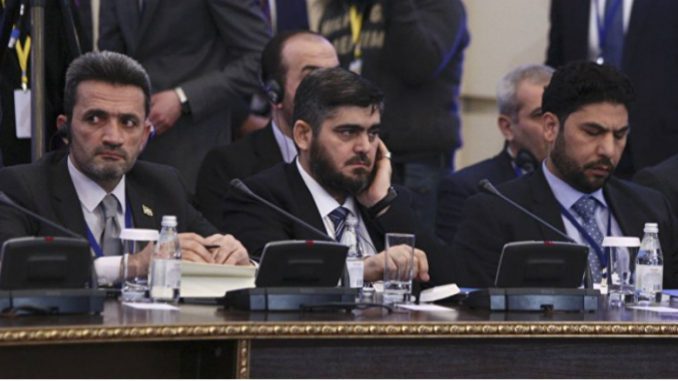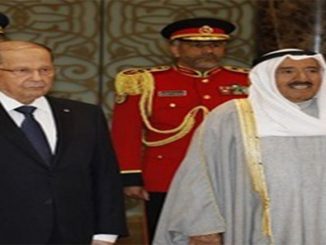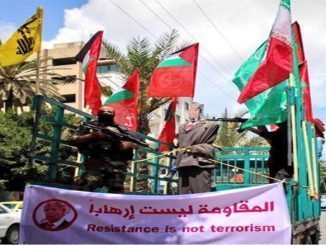
The Astana process has deprived the Syrian opposition of an efficient bargaining chip in their negotiations with the regime for a political transition in Syria. In comparison, the Geneva discussions appear to have lost all of their potential to produce a credible and sustainable solution to the Syrian conflict.
As the perspective of a political transition without Assad grows slimmer with each passing day, the West is leaning towards supporting a decentralized post-war Syria. Locally elected civilian councils offer an alternative to Damascus for donor countries. This policy brief measures the prospects for achieving international and Syrian opposition objectives in the course of the transition.
The Russian intervention in Syria gave the regime forces and their allies the edge they needed to overcome the stalemate reached after a series of strategic opposition wins in Idlib and Dera’a. Russian air superiority and lethal attacks first led to the fall of Aleppo and enabled the regime forces to isolate opposition armed groups into small enclaves. Meanwhile, the U.S. and their regional opposition backers have not matched Russia’s assertiveness in Syria: on the contrary, they have yielded to Moscow’s vision of the future in Syria, and have realigned their priorities accordingly.
Consumed by its anti- Islamic State (IS) campaign, Washington gradually decreased its assistance to the Free Syrian Army (FSA), and ultimately brought it to a halt in July 2017. On the regional level, Riyadh focused all its financial efforts on defeating the Houthis in Yemen, as an Iranian proxy, and abandoned most of its local Syrian clients. Similarly, Ankara’s priorities have shifted to countering the Democratic Union Party (PYD), the Syrian branch of the Kurdistan Workers’ Party (PKK), and it has abandoned its support for the opposition. Diminished and deprived of the necessary assistance to maintain their military efforts against the regime, armed opposition groups have resorted to accepting local truces and ceasefires to preserve their control over territories.
The Astana process initiated by Russia and endorsed by Turkey and Iran, consolidated the fragile regime victory into a permanent nationwide ceasefire framework. No real peace has yet prevailed, and opposition enclaves in Eastern Ghouta and Northern Homs (the fault of effective deterrence) are subject to further escalation. Nonetheless, Moscow has achieved its principal objective, which is efficiently separating the ceasefire negotiations from the overall political track.
Following the outcome of Astana, the opposition is more than ever engaged in an indecisive and undetermined political process in Geneva. This policy brief attempts to identify the prospects for a political transition in Syria.
De-Escalation Zones
The Syrian opposition at large went through two significant recruitment dynamics. The first one was revolutionary, inspired by the Arab Spring, mostly urban, popular with civilian activists, and primarily embraced pacifism. The second dynamic was communal, enticed by feelings of revenge for the regime’s crackdown on civilians, predominantly rural, and took the shape of an armed insurgency. By the end of 2013, the second dynamic had completely dominated the opposition, and by extension, local dignitaries acquired an increasing importance for their higher capacity to command and control their respective communities.
Local armed opposition groups interacted with local councils in various ways and to various degrees, in many cases enjoying a “fraternal” relationship, with members of the same family acting as officials in both. In other instances, they co-existed and merely tolerated each other, with occasional frictions arising now and then. Nevertheless, the void left by state withdrawal allowed activists to establish local governance, with accountability mechanisms and the participation of local inhabitants, without the interference of armed militants.
The de-escalation zones, however, have the potential to creating a power struggle within opposition areas. The armed opposition groups – under the auspice of these arrangements – have acquired a tacit recognition from Moscow, Damascus and Tehran, a status that will eventually be threatened by the organic kind of legitimacy local councils have obtained through elections or public consensus. The FSA and other militant groups previously acquired their popular support from fighting the regime forces, now that that is not possible anymore they will seek legitimacy through imposing a monopoly over their theoretical territory. This scenario is precisely the case of Hay’et Tahrir Al-Sham’s (HTS) latest efforts to create a local government in Idlib and force all organic organizations and councils into submission.
In these circumstances, new collaboration and cooperation dynamics will emerge. Damascus and Tehran have no real interests in encouraging any organic organizations: quite the contrary, they both have longstanding experience working with and reinforcing compliant non-state actors. As self-preservation instincts take over the remainder of the armed opposition, and the regime lacks the human resources to re-establish order over all of Syria, it is not utterly outrageous to envisage collaboration between the two. Indeed, Damascus has elaborated similar schemes in the past, in the Kurdish-populated areas with the partnership of the PYD, and with armed militants as in Barzeh between 2014 and 2017, and it is highly probable that we will witness the same process in Northern Homs and Aleppo countryside. The only necessary condition for this dynamic to prevail is the armed opposition groups’ recognition of the regime’s sovereignty, an arrangement which was initiated in Astana and is expected to mature in Sochi.
It is worth noting that Iran is leading a parallel process of preserving and institutionalizing the loyalist militias they have established in Syria, by pressuring Damascus into adopting a PMF-like law. These groups are not purely military; they include civil servants and humanitarian aid workers too. They often work with the regime forces and institutions, but they have also taken over the responsibilities of the state in many deprived areas. The Local Defense Forces network, for instance, have implemented many small reconstruction projects in Aleppo in addition to providing security to their constituencies. In such a divided but de-escalated environment, Damascus does not need excessive military power to reclaim its authority over the country. Assad can achieve control by merely acquiring a relatively stronger deterrence force (provided by the Russians), and by imposing a new collaboration and subordination framework (to be sought in Sochi).
Geneva Versus Sochi
If the de-escalation process in Astana has implemented the Russian interpretation of the nationwide ceasefire of U.N. resolution 2254, then the Kremlin is looking to carry out its version of the political transition of the same resolution in Sochi. Indeed, Moscow is strictly opposed to any regime change in Syria. Instead, it is seeking to initiate a normalization process for the current status quo.
To put this into effect, the Russian Ministry of Defense established a reconciliation center in Hmeimim in February 2016. As its name stipulates, the center has been responsible for negotiating 2301 local truces with 234 armed opposition groups. The terms of these arrangements usually compose of their recognizing the authority of the Syrian government in exchange for humanitarian aid, and in most cases, local militants are asked to observe a ceasefire. Issues such the release of prisoners, the free movement of civilians, the return of refugees, and reconstruction are discussed case by case, and they are mostly related to a broader national dialogue.
On the political level, Moscow has reduced the transition to drafting a new constitution for Syria, and the organization of national elections in the next couple of years. The Russians elaborated a proposed Syrian constitution in January 2017. This Russian draft emphasized the laicity of the state, introduced a seven-year presidential term with no right to run for a second consecutive term, and the establishment of an “Assembly of Regions”, which stipulates decentralizing the government and empowering local councils.
Moscow wishes to get as many intra-Syrian and regional stakeholders to support its mediation efforts as possible. Ideally, Russia needs them to share its vision for how the process should be implemented too. This approach seeks to raise its regional credibility and its ability to offer constructive solutions and leans on its flexibility to work with all the interested players. Thus, naturally, the Kremlin prefers to negotiate this process in Sochi, not Geneva, with the minimum level of international intervention required.
Acutely aware of this reality, Stephan De Mistura has fully endorsed the Russian approach in Geneva. He has pressured the opposition delegation to postpone discussions on the political transition and to focus instead on the new constitution and national elections. Nonetheless, his renewed efforts to maintain Geneva as the primary venue for the political track will fail. The newly formed opposition delegation in Riyadh is heterogeneous, with conflicting views on almost everything about the process. The Moscow-sponsored opposition platform, for instance, believes in a conspiracy against Syria led by the same people it partnered with to establish the delegation. Additionally, De Mistura has no means whatsoever to pressure the regime to abandon its rogue behavior.
As the Geneva process loses focus and gets into interminable fruitless rounds, Sochi seems inevitable. In Sochi, Russia intends to convey a large multi-ethnic, multi-party Syrian assembly, with more than a thousand invitees to give the impression of fair representation, and will effortlessly push through its agenda and convince them to adopt its vision. In the best scenario, Geneva will only serve as a confirmation for the outcomes of Astana and Sochi. Meanwhile, the international community has started shifting its priorities to the post-IS and reconstruction phases, which are premature moves with no real hope of inducing sustainable change in the country.
Reconstruction
The priority of the international community in Syria since 2014 has been defeating ISIS. Thus, it is only natural that the end of the terrorist group’s direct control over its former territory has created a false impression of achievement in Syria. The new priority now is to stabilize Syria and at any price, even if it entails re-establishing the regime’s authority over the country. It is not difficult to prove the futility of restoring a vengeful dictator responsible for the death of hundreds of thousands and the destruction of his country’s economy and infrastructure. Nonetheless, the typical international reaction to difficult and complex problems is to throw money at them, and this is what the international community is preparing itself to do in the Syrian context.
The IMF has estimated the cost of rebuilding Syria at $200 billion, and no single entity can fund reconstruction alone at this scale. The U.S., EU, and Western countries are inclined to adopt a “Stick and Carrot” approach to force the regime to make concessions it has refused to give on the battlefield. For Damascus to get the much-needed funds, it needs to show a “commitment” to a comprehensive change in its political system. The Russians, on the other hand, have explicitly urged donor countries to help rebuild Syria unconditionally. For Moscow, reconstruction is instrumental in Assad’s domestic rehabilitation.
Two conditions need to be met for the West to use reconstruction funds to induce a change in Syria:
1- They hold the indispensable capital to fund this activity.
2- They can impose a high level of transparency and accountability on the Syrian state.
Needless to say, there is little hope in enforcing good governance on a corrupt regime. Nonetheless, there are fundamental issues that experts keep missing when analyzing the Syrian regime’s need for foreign funds.
First, Damascus primary need for resources is to fund its military campaign. From the year 2013 onwards, Iran and the IRGC have fulfilled this need by employing tens of thousands of local and foreign militants. The IRGC wishes to secure its influence in post-war Syria and to institutionalize its Syrian proxies in the state apparatus. While IRGC proxies outnumber Assad loyalists in the country, injecting more money would only exacerbate corruption and underlying conflict of interests with no guarantees of weakening Iran in Syria.
Second, the emergence of a war business community. The Syrian conflict has nourished a favorable environment for corruption and clientelism, and it has also lifted pre-existing constraints on patrons close to Assad. Never has the regime been as dependent on them for its survival as it has grown to be since 2011. They control the mainstream media, transportation, fuel imports, urban security, militias, trade, exports and all primary state functions. The regime’s close clique will not only resist any change that could challenge their authority, but will also ensure maximum profit from the reconstruction. Indeed, the government has already conceded a number of projects to these businessmen in anticipation of the next phase.
Third, the aggressive growth of the anti-revolution regional axis in the Middle East. Abu Dhabi, Riyadh and Cairo genuinely feel threatened by the Arab Spring, and the doctrine they have adopted to counter Arab revolutionary sentiment consists of assisting authoritarian regimes in place and the preservation of stable centralized states. In Syria however, they initially opted to support the opposition to oppose Iran’s growing influence in the region. Incapable of instating a new authority without Islamists, and after the intervention of the Russians, they are now inclined to employ a new strategy in the country – to buy the loyalty of the regime. The reconstruction of Syria is an excellent venue to propose substantial funds for Damascus in exchange for cutting ties with Tehran. In return, Assad is pragmatic enough to give the semblance of compliance without efficiently countering Iranian influence in the country.
Given this reality, the U.S. has committed itself to assist rebuilding regions under the control of their allies, mainly the SDF. This commitment offers an alternative venue for Washington rather than relying on the Damascene option. The EU, on the other hand, cannot afford to constrain their assistance to SDF territory only. Brussels and the rest of the European capitals need to stabilize the populated part of Syria under Assad’s control. There is a considerable risk that the EU eventually abandons its current position and adopts looser constraints. With Iran, Russia, China, and even India showing interest in rebuilding Syria, the European will feel pressure to acquire stakes in the rebranded authoritarian Syria.
Conclusion
There are many reasons to believe Syria would not have emerged intact if the opposition succeeded in toppling Assad, but it would have been a choice supported and endorsed by a broad and representative segment of the Syrian people. The transitional period would have still required the assistance and even intervention of the international community, but it would have enjoyed a more significant popular participation and buy-in. The change the Syrian people strived for could have been accomplished in few years; instead, offering a victory to Assad turned it into a generational transition in best case scenario.
The international community recognizes Damascus’s inability to impose the same level of centralization it used to enjoy before the uprising in 2011. Local communities have adapted to the retreat of state institutions and their failure, and have since established their own grass-roots, communal forms of governance. It is thus predictable for states unfriendly to Assad to seek alternatives to dealing with a central government by directly conducting their business with local organizations. Indeed, there is a sense of international consensus to endorse decentralization in Syria. A decentralized structure has the potential of reconciling the conflicting regional and global interests in the country, offering a structure to normalize the existence of various zones of foreign influence in the Levant.
Administrative and even political decentralization has the potential to fix the decayed nation-state model the region has been suffering from since its independence. Nonetheless, it can only prevail and succeed in a stable and mature social environment. For decentralization to realize its full potential, local actors need to negotiate it in an overall cooperative framework. Installing a decentralized structure in a nonconclusive post-war setting would only result in further societal fragmentation and the empowerment of corrupt local patrons.
*The analysis was written by Sinan Hatahet and published by Alsharq Forum.



